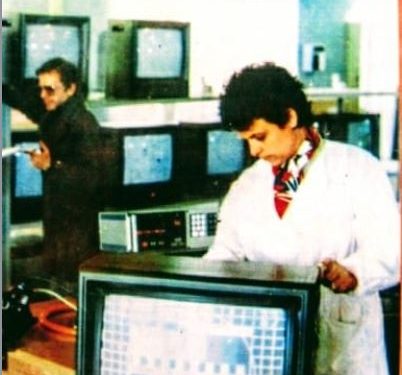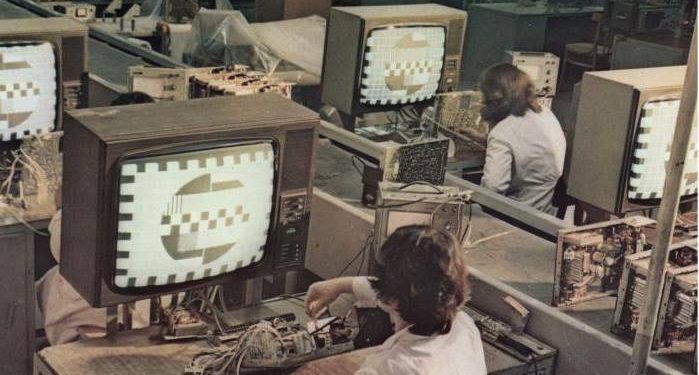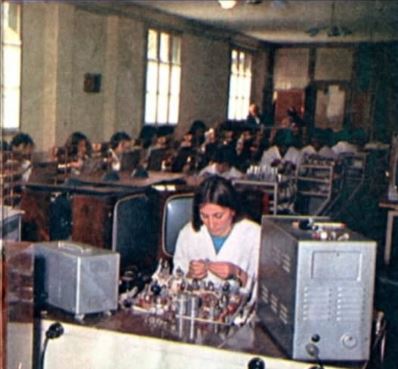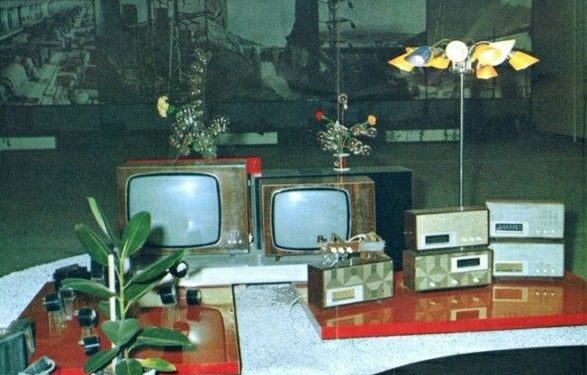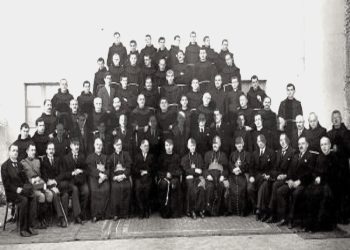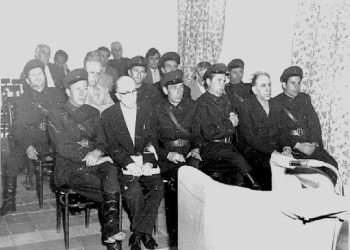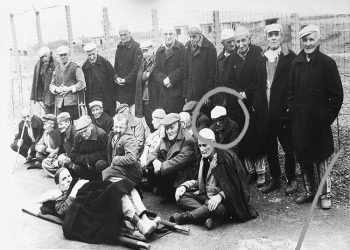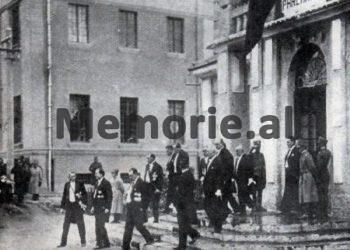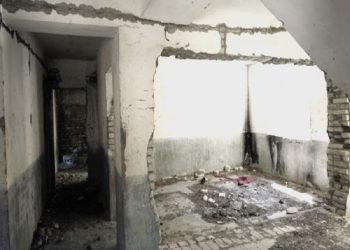Memorie.al / The Radio and Television Plant, or as it is also known: the URT of Durrës, is renowned throughout the country for its radios and televisions. Its products were distributed across Albania, and due to their quality, it was regarded everywhere as one of the best factories. The Radio and Television Plant in Durrës began functioning initially as a workshop producing artisanal goods and various products. It served for the production of consumer electronics and for various sectors of the economy. The first workshop dates back to 1963 as a separate section of the Electromechanical Plant.
Only around the years 1973-1974 did it take on its full form and begin operating as a factory. Year after year, it improved its equipment and technology, leading to the opening of production lines with advanced technology. Thus, the line for processing printed circuits was opened, alongside the production of casters, as well as a range of metal and plastic components. In the 1980s, for the first time, the color television of the “Blaupunkt” brand was produced. At its peak production capacity, URT launched 9,000 radios and 6,000 televisions into the market.
THE PLANT
The plant received its full name only in 1973, after having served as a workshop for more than 10 years. Its initial steps were taken by Ali Çitaku, who worked at the Pioneer House as the head of the electronics department. Almost nothing existed in those early years. The workshop of 1965 was opened near the old railway station. Those who worked there at that time remember how the workshop transformed in just a few years into a quality department and a training ground for many girls and boys, who would later become some of the pillars of the Radio and Television Plant.
The surface area was about 30 square meters, and the three rooms, which held simple wooden line equipment, comprised its entire inventory. In 1965, Ali Çitaku and Agim Fishta took on several girls who had just graduated from high school and prepared them to produce coils in the winding room.
They found support from the director Hysen Ballhysa, who urged the specialists to do whatever was necessary to expand the activity, as he took on the responsibility of securing the required funds. The winding machines were small and simple. Over time, this modest workshop installed oscilloscopes, testing equipment, etc.
Here, the first radio was produced by Çitaku and Fishta, whose names soon became well-known not only in Durrës. This increased the volume of work, while the departments expanded as within a few months, 65 more young people were taken on. At the same time, the company showed interest in seeking skilled specialists.
Thus, in that miniature factory, the production masters; Mirban Kadiu, Kristaq Ekonomi, and Maksim Prifti were employed. Two to three years later, thanks also to the dedication and special skills of the electronics engineer Lulzim Topçiu, the first black-and-white television was produced. Due to the expansion of the departments, it was deemed reasonable to create a separate factory for radios and televisions.
The department, along with its equipment and apparatus, was transferred to the location that today citizens known as the URT area. The constructions for the plant followed one after another. There, electronic equipment for the automation of industrial processes was installed. In the large and high hangars, imported machinery was set up, and in a short time, the plant became a very important center.
In approximately 20 years of its activity, several dozen types of radios, televisions, tape recorders, stabilizers, and other measuring, controlling, and commanding devices were produced, widely fulfilling the needs of the country. The plant covered more than 5,000 square meters and employed 1,500 technicians and specialists.
Throughout its existence, the plant produced only for the domestic market, although its radios and televisions were successful and proved to be of high quality. URT was one of the most important factories of its time, with 25 years of experience in this field.
PRODUCTION
The first production dates back to 1965. The production masters; Ali Çitaku, Agim Fishta, and Kristaq Ekonomi, using parts found in various enterprises, made the first radio. This was followed by the production of five others within the month. The initiative sparked interest from the government, thus one year later, the workshop was visited by Mehmet Shehu, who was then the Prime Minister of Albania.
The first radios had some minor issues, but these did not diminish the will to produce at all. On the contrary, Mehmet Shehu urged technicians to take models from Italian radios, so they could later make similar models. After this meeting with the head of the government at that time, the technicians of URT began gathering the necessary parts from warehouses across the country.
In Shkozet and in the warehouses of the Municipality, there were many devices for radios and televisions. They included good Chinese, Yugoslav, German, etc., parts. Specialists and technicians adapted them without too much difficulty, drawing on the experience gained and the qualified opinion they had. All the radios were named “Durrësi 1,” “Durrësi 2,” and so on, including “Iliria.” The electrification of the country had not yet been completed; therefore, technicians decided to produce battery-operated radios. These were 30 cm long, and there was high demand.
Batteries were produced by the army, specifically for the small factory with various amperages and voltages. Radios held significant political importance at the time, which is why the government was interested in supporting the production line primarily for battery-operated radios. With the arrival of Lulzim Topçiu, this small factory experienced a qualitative leap in its work. In addition to radios, the first televisions were also produced in 1968.
All parts were sourced from local warehouses, while imported materials began to arrive in the 1970s. The first 120-130 televisions were very well received, and technicians and engineers began to explore possibilities for further modifications. Topçiu not only knew his specialty well, but he was also a person of profound knowledge, becoming very active and trusted by everyone.
The plant and its progress are closely tied to the aforementioned names. Year after year, skilled technicians and engineers who graduated with excellence began to come. Bashkim Kopliku, Adrian Qereshniku, Vladimir Shehu (the son of Prime Minister Mehmet Shehu), and Dhimitër Vrahoriti became the most innovative voices in establishing a modern factory for that time and in implementing regular production lines for radios, televisions, amplifiers, tape recorders, stabilizers, etc.
Mustafa Gjonku also came from Shijak to work at the factory. He had a strong desire to produce amplifiers and sound centers…! Seeing Gjonku’s passionate work, the production master, Ali Çitaku, decided to name the amplifiers “Erzeni.” During this time, the importation of parts, such as bulbs, resistors, capacitors, and various elements began. Generally, supplies were sourced from the former Yugoslavia, Italy, and Hungary.
The government periodically increased the funding for the plant. Ali Çitaku would go abroad himself and oversee the supplies. From time to time, technicians and other engineers would go to various factories producing televisions and radios to obtain different models. In its early days, no more than five radios were produced per month, which increased to 50. After the Radio and Television Plant was established, production rose to 300 units per month.
With the introduction of production lines for amplifiers, stabilizers, and tape recorders, the expansion of facilities became necessary. All schools and enterprises began to be supplied with sound centers and radios. Utilizing parts sourced in Niš from the former Yugoslavia, the “Rozafa” television was produced, while the television from the Romanian line was named “Adriatic.” The improvement of the production lines led to the manufacturing of the color television “Blaupunkt” in 1980, a German product.
The specialists and engineers in Durrës became skilled in producing every brand of television. After obtaining parts, the technicians produced the “Riviera” and “Rozafa” televisions, which were identical to the Italian PHILIPS and the German BLAUPUNKT. Due to high market demand, production quantities increased to 9,000 radios annually and 6,000 televisions.
A radio sold for an average of 5,000 old ALL., while a black-and-white television cost 40,000 old ALL., and the color television was priced at 60,000 ALL. Televisions were distributed only with authorization. The plant also managed to produce coils for high-voltage transformers, and this achievement was considered a success for the time. Memorie.al




